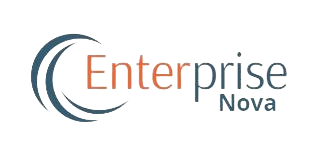The 4D’s of design thinking refer to four phases or stages often used to frame a human-centered design process. They are:
- Discover
- Define
- Develop
- Deliver
This model is closely related to the well-known Double Diamond framework by the British Design Council.
Each stage plays a specific role in helping teams move from ambiguity and uncertainty toward a concrete, tested solution. Let us explore them in more depth.
The Four D’s: Explained
| Phase | Purpose | Key Activities | Benefits |
| Discover | Understand the problem space, gather insights about people, context, needs, and pain points. | User research (interviews, observation), market analysis, empathizing, collecting data and stories. | Avoids assumptions; uncovers real needs; broadens perspective; ensures the design is grounded in reality. |
| Define | Synthesize what has been learned; clarify what problem(s) to focus on; frame the design challenge. | Analysis of research data, pattern-finding, defining user personas or journey maps, “How Might We” statements, setting criteria. | Creates alignment on what the real problem is; focuses efforts; helps avoid solving the wrong problem. |
| Develop | Generate ideas; prototype; test; iterate. Essentially exploring solutions. | Ideation (brainstorming, sketching), creating prototypes (low fidelity to high), user testing, gathering feedback, refining. | Encourages creativity; allows failing early; improves ideas through iteration; increases probability of finding an effective solution. |
| Deliver | Finally implement, launch, evaluate, and refine the solution in real world conditions. | Finalizing design, building or coding, deploying product or service, monitoring performance, gathering feedback, making adjustments. | Ensures solution is viable, usable, and sustainable; helps measure impact; closes the loop with users; avoids “designs that look good on paper but fail in practice.” |
Origins & Why It is Useful
- The 4D model is often attributed to Nigel Cross, among others, and is used in design and product development to simplify and clarify the stages of design thinking.
- The Double Diamond model (Discover → Define → Develop → Deliver) codifies these four stages and emphasizes both divergent thinking (broad exploration) and convergent thinking (focusing / selecting).
- Using these stages helps teams avoid jumping too fast into solutions without understanding the problem, and encourages iteration.
Best Practices & Pitfalls
To use the 4D’s effectively, consider these tips and watch out for common mistakes.
Best Practices
- Iterate, do not just go straight through once. The process is rarely linear. You may revisit Discover or Define after getting feedback.
- Include real users from the beginning. Empathy and user feedback are central; skipping them leads to poorly aligned solutions.
- Prototype early and cheaply. Low-fidelity prototypes (paper sketches, wireframes) can validate ideas before heavy investment.
- Divergent & convergent thinking in each relevant stage. For example, in “Discover” you diverge (gather lots of data), then converge (identify key insights). Also in Develop (ideate broadly) then narrow.
Define clear criteria for success. What metrics or outcomes will tell you the solution works? Use them especially during the “Deliver” Stage.
Common Pitfalls
- Assuming you know the problem. Skipping “Discover” or doing it superficially leads to solutions that miss the mark.
- Over-defining before developing. If you lock in ideas too early, you may suppress innovation.
- Poor feedback loops. Skipping user testing or ignoring feedback undermines the process.
“Delivery” without evaluation. Launching something without seeing how it performs in reality misses an opportunity for refinement and learning.
Why It Matters
- Helps manage complexity: When problems are fuzzy, the 4D structure gives order without being rigid.
- Promotes empathy and human-centered design: By discovering and defining with care, the solutions are more likely to truly serve people’s needs.
- Encourages innovation and reduces risk: You test, fail fast, iterate. Cheaper to correct mistakes early than rework a fully developed product that users dislike.
- Aligns stakeholders: Everyone from designers, engineers, business, users can see where things are in the process and what to expect.
Example in Practice
Let us suppose a startup wants to build a new mobile app to help students manage study schedules and improve mental well-being.
- Discover: Do interviews with students, observe how they currently plan studies; research existing tools; understand stress points.
- Define: Analyze the findings; identify that the core need is not just scheduling but balance between study and rest; define a focused problem statement: “How might we help students maintain a healthy study-rest balance without feeling guilty or overwhelmed?”
- Develop: Brainstorm features (pomodoro timers, rest reminders, community sharing etc.); build prototypes; test with a small group of students; iterate.
Deliver: Build the app, launch a beta, collect usage data, user feedback; iterate and update features; finally do a full launch ensuring infrastructure, UX, support etc. are ready.
Conclusion
The 4D’s of design thinking (Discover → Define → Develop → Deliver) form a powerful, time-tested framework for problem solving, particularly when dealing with complexity, ambiguity, and human needs. They help make innovation systematic, informed, empathetic, and resilient.

